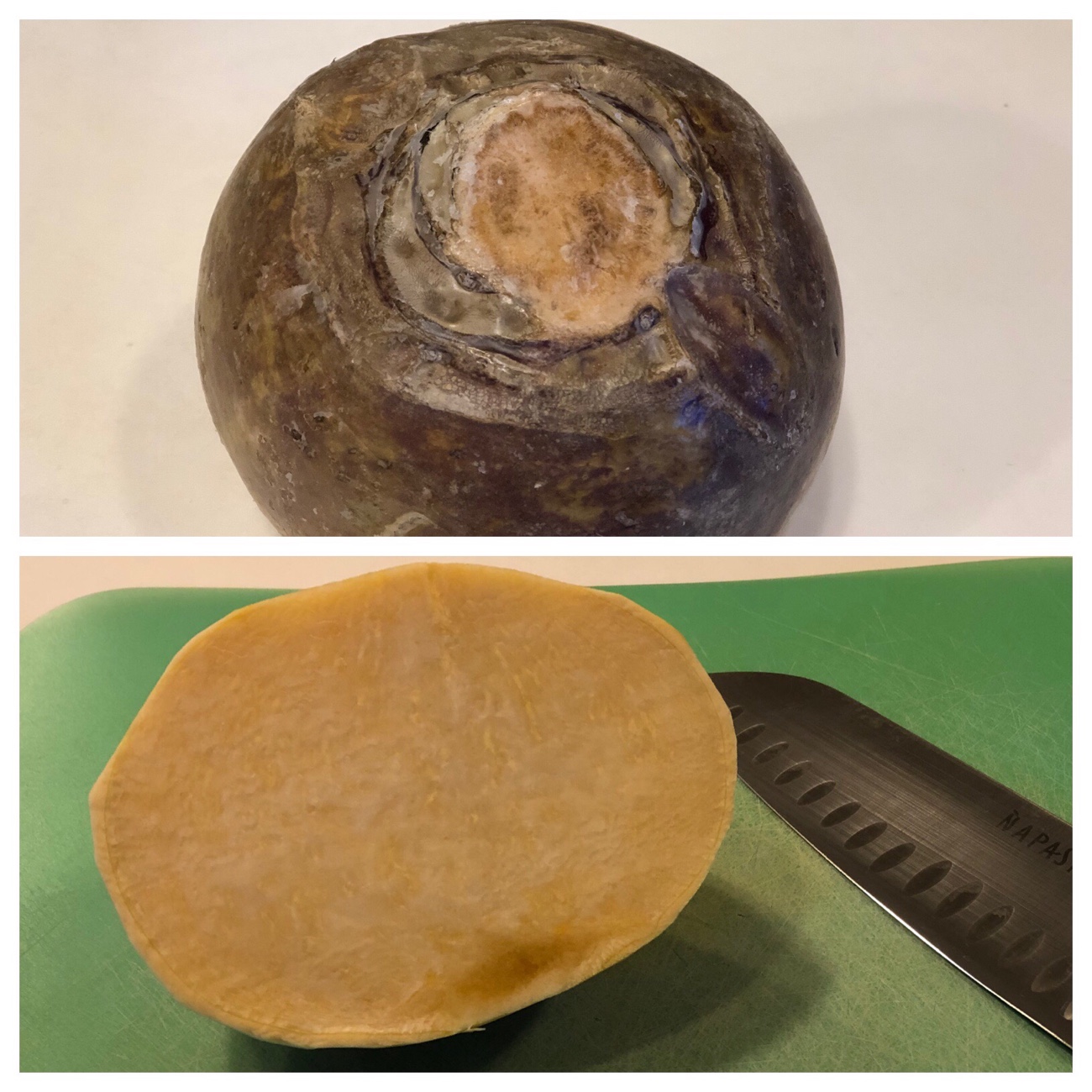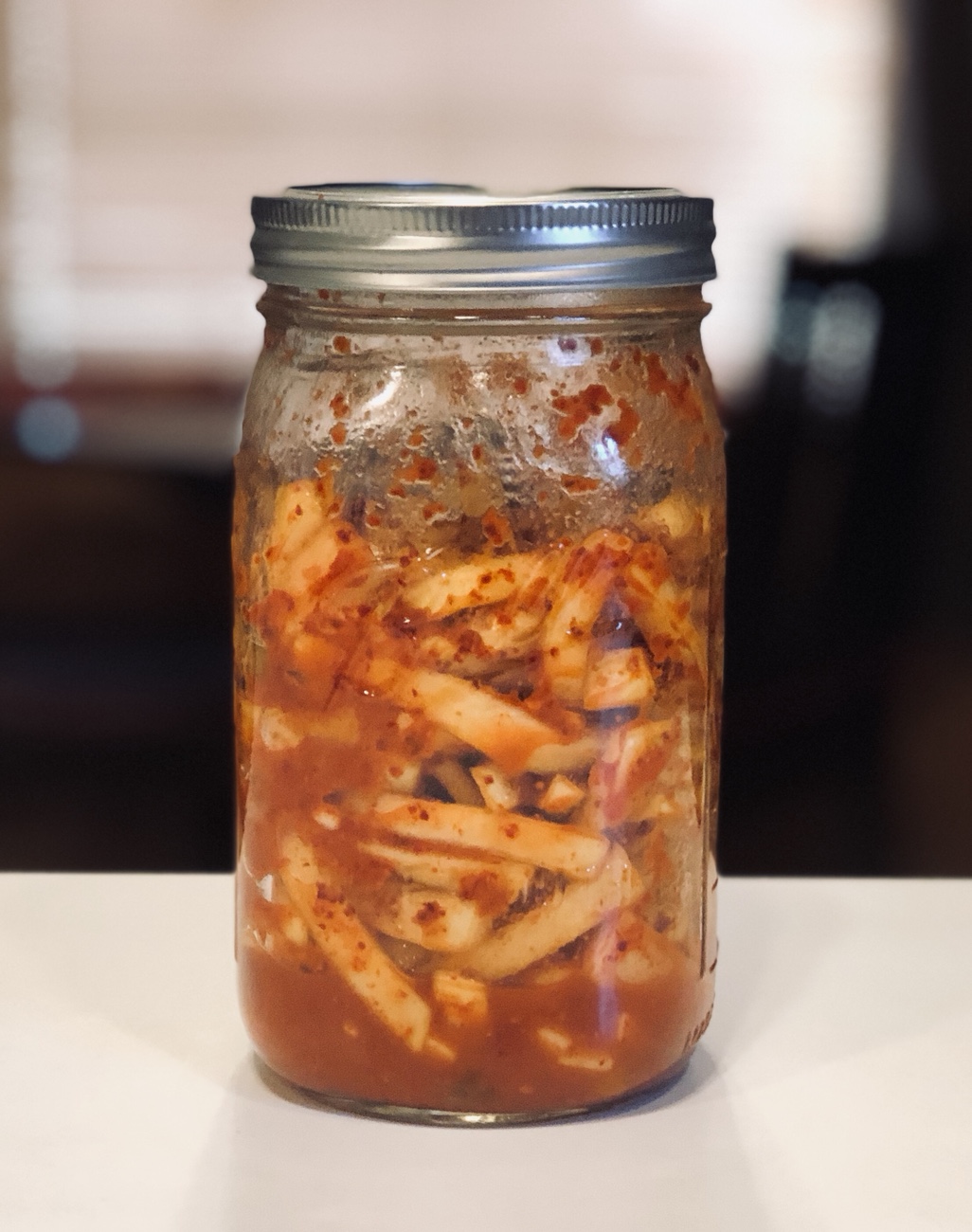
Why do root vegetables like rutabagas get a bad rap? They’re nutritious, tasty, and, properly stored, can stay edible for a long time. It must have something to do with their plain appearance – no flash, no glitz, just “what you see is what you get”. And, because I like their lack of pretense (and their flavor), I’m making them into a probiotic delight. Join me on this kimchi-making journey!
It may not be much to look at, but the slightly rough-looking rutabaga I used was just fine, once peeled.

How many other veggies could last an entire winter in a root cellar? Most people simply use their refrigerator instead of root cellar, but the fridge poses some obvious space constraints. This article from Modern Farmer has helpful instructions for storing root veggies in your basement and also offers creative non-basement storage ideas, too.
Back to the kimchi: once peeled, I cut half a large rutabaga into matchsticks. Why? Because I like them. Why only half? This is a “test” batch. Then, I salted and sugared the matchsticks and left them for a half hour.

At the end of the half hour, a small amount of juice from the rutabaga had collected at the bottom of the bowl – just the right amount to mix with the minced ginger, garlic, fish sauce, and gochugaru (Korean Hot Pepper Flakes, 고추가루). Be sure to use gochugaru for authentic kimchi flavor! Based on the weight of the rutabaga, I quartered the recipe I normally use for kkakdugi.
Once they were well-coated with the spices, I packed the matchsticks into a jar. I have a couple of wide-mouth quart jars designated for kimchi because, honestly, the rubber parts in the lids retain the smell forever. For this batch, instead of using a new jar, I just used a kkakdugi jar that was nearly empty (and ate the last remnants of kimchi – extra spicy because it was at the bottom of the jar!). The juice from the previous contents should serve as a starter to facilitate the ferment, and has what should be a complementary flavor profile.

I’ll burp this batch daily and press it down as needed (there was already an impressive amount of pressure in the jar this morning, a sign of active fermentation). In a few days to a week – I’ll keep sampling it until it tastes just right – it should be ready to enjoy!
